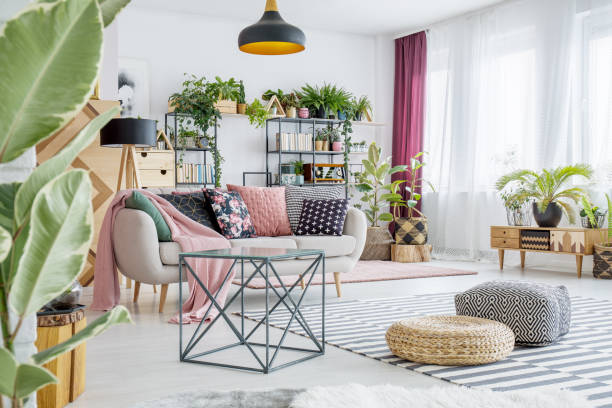Creating Your Perfect Living Room: A Comprehensive Guide
The living room is the heart of any home, a space where families gather, friends socialize, and individuals unwind after a long day. It's essential to create a living room that not only reflects your personal style but also functions effectively for your lifestyle. This guide will explore various aspects of living room design, from furniture selection to decor choices, lighting options, and textile selections, helping you craft a space that's both beautiful and comfortable.

When choosing furniture, consider both style and comfort. Look for pieces that complement your overall design aesthetic while also providing ample seating and storage. Don’t forget to include a coffee table or ottoman for convenience, and consider adding a bookshelf or media console to house your entertainment system and display decor items.
What Are the Best Decor Ideas for a Stylish Living Room?
Decor plays a vital role in bringing personality and warmth to your living room. Start with a cohesive color scheme that reflects your taste and complements your furniture. Incorporate a mix of textures and materials to add depth and interest to the space.
Wall art is an excellent way to express your style and create focal points in the room. Consider a gallery wall with a mix of framed prints, photographs, and mirrors. Plants are another fantastic decor element, adding life and freshness to your living room while also improving air quality.
Don’t overlook the power of accessories like throw pillows, blankets, and decorative objects. These smaller items can tie your color scheme together and be easily swapped out to refresh your space seasonally.
How Can Lighting Enhance Your Living Room Ambiance?
Lighting is a crucial element in creating the right atmosphere in your living room. A well-designed lighting plan should include a mix of ambient, task, and accent lighting. Start with a central ceiling fixture or recessed lighting for overall illumination. Then, add table or floor lamps near seating areas for task lighting, perfect for reading or other activities.
Consider using wall sconces or picture lights to highlight artwork or architectural features. Dimmers are an excellent addition to any living room lighting scheme, allowing you to adjust the mood from bright and energetic to soft and relaxing.
Don’t forget about natural light. Maximize windows by using sheer curtains or adjustable blinds that allow you to control the amount of daylight entering the room throughout the day.
What Textiles Can Add Comfort and Style to Your Living Room?
Textiles are an excellent way to add warmth, texture, and color to your living room. Start with a rug that anchors your seating area and adds softness underfoot. Choose a size that allows all furniture legs to sit comfortably on the rug, or at least the front legs for larger pieces.
Window treatments are both functional and decorative. Curtains or drapes can add color and pattern while also controlling light and privacy. Consider layering sheer panels with heavier drapes for versatility.
Throw pillows and blankets are easy ways to add comfort and style to your seating. Mix and match patterns, textures, and colors to create visual interest. Don’t be afraid to switch these out seasonally or when you want to refresh your living room’s look.
How to Arrange Furniture for Optimal Flow and Functionality?
The arrangement of your furniture can significantly impact the flow and functionality of your living room. Start by identifying the room’s focal point, whether it’s a fireplace, a large window with a view, or a TV. Arrange your main seating pieces to face this focal point.
Create conversation areas by positioning seating so that people can easily talk to one another. In larger rooms, you might have multiple seating areas. Ensure there’s enough space between furniture pieces for easy movement – typically, allow for 30-36 inches of walkway space.
Consider traffic flow when placing furniture. Avoid blocking natural pathways through the room, and ensure there’s easy access to entries and exits. If your living room is also a thoroughfare to other areas of the home, create a clear path that doesn’t interfere with the main seating area.
Remember to leave some breathing room. Not every inch of wall space needs to be filled with furniture. Some empty space can make a room feel larger and more relaxing.
By carefully considering your furniture, decor, lighting, textiles, and layout, you can create a living room that’s not only visually appealing but also perfectly suited to your lifestyle and needs. Whether you prefer a cozy, intimate space or an open, airy room for entertaining, these elements will help you achieve the living room of your dreams.






